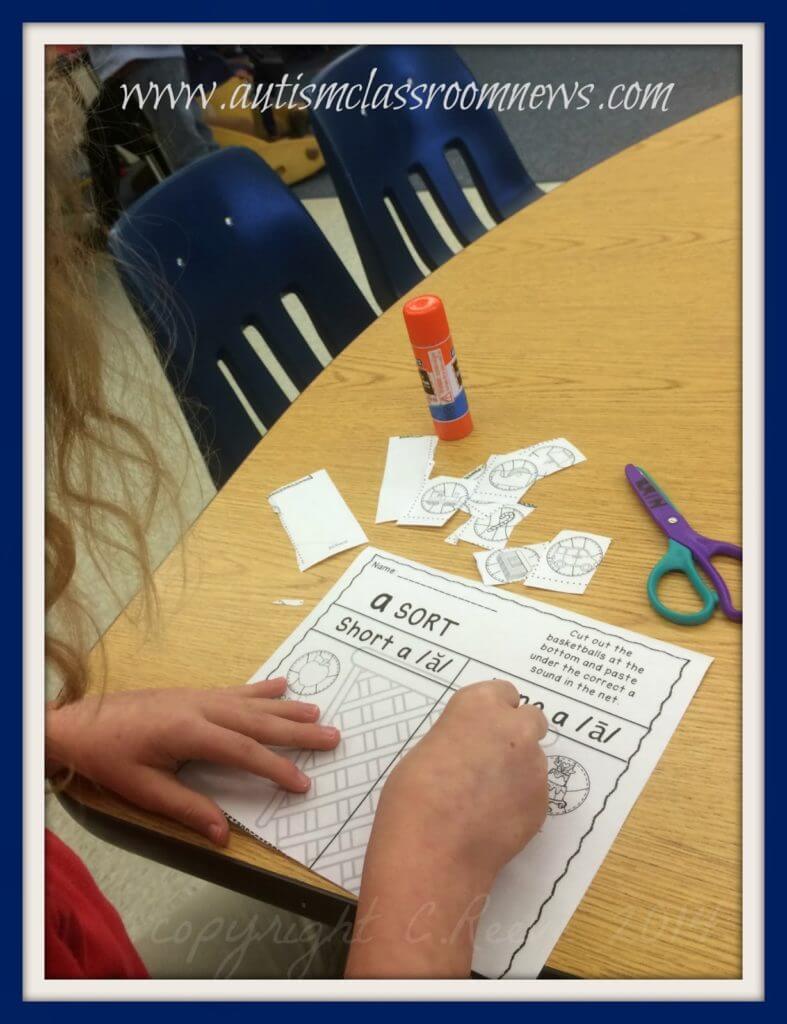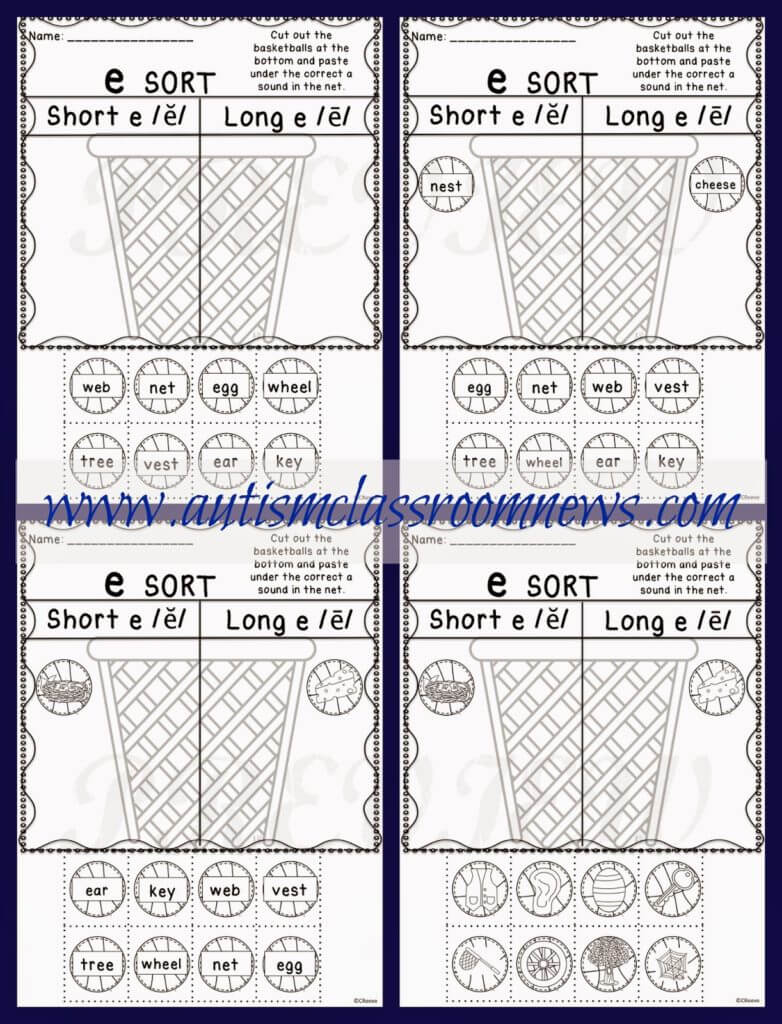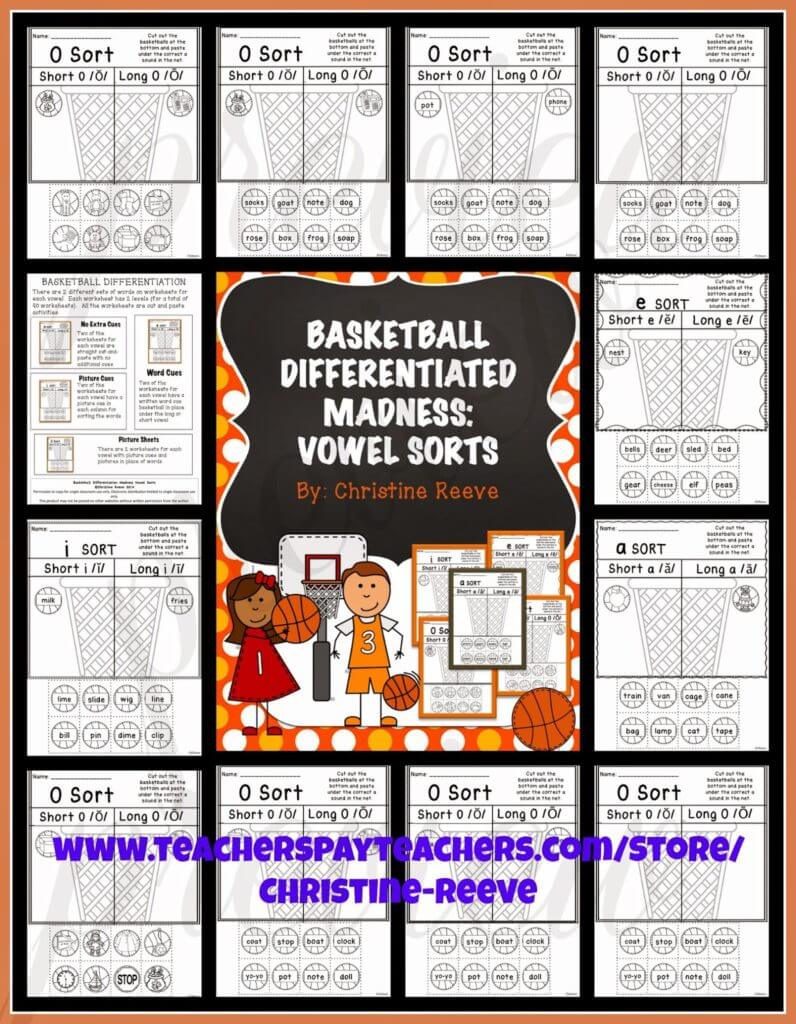Sharing is caring!
Whoo, the last few posts have been more intense with research stuff on evidence-based practice and I’ll be back in the next post to talk more about that. However, I had a crazy week with unexpected trips, but did manage to finish up a couple of projects. So this post will be a little lighter fare. I’ve been talking with Superteach from Superteach’s Special Ed Spot about good activities that can differentiate learning easily among a variety of learners. Most of the teachers I work with have a wide variety of learners in the classrooms or on their caseload. This means that often 1 set of material doesn’t serve all the needs of their students. As those who know my store, you know that I try to differentiate many of my activities. For instance, earlier this week, I was using my Money Task Cards 4 with a student who can count bills but not larger bills. We were trying to keep him regulated with his behavior so we didn’t want to push too far into difficult tasks. I was able to use just the task cards that had $1 bills to count on them and leave the others out so he wasn’t frustrated by problems he couldn’t complete. I’ve written about why I like task cards for this reason HERE. But sometimes you need some permanent product to use for data collection and monitoring and it’s nice to be able to send completed work home with the students for their families to see. And of course it’s fabulous to be able to just print them and go with no lamination or cutting on your part! However, these materials often aren’t differentiated and you have to buy or make different products to meet the diverse needs of all the students in the classroom.
Earlier this year, I developed some vowel sorting cut-and-paste worksheets for students working on letter sounds. Many of the kids I work with struggle with writing so I look for opportunities to use manipulatives as much as possible and cut-and-paste also gives them the opportunity for fine motor skills and cutting practice. It also works well for independent work systems. However, I gave them to Superteach to use and she pointed out that although I had 3 levels of differentiation, many of the kids couldn’t yet read the words proficiently and would benefit from pictures. So, to save my wonderful sister some time, meet the needs of some of the kids I work with, and just because I really seem to like making things, I made new set. I chose a basketball theme because it’s college basketball season and I’m a huge Duke fan (I can still be friends if you root for UNC) and because I have a student with a special interest in basketball. So, let me show you the different types of worksheets contained in this set to see if they might work for your kids or they might spark an idea of something that will help your students.
There are 4 levels of each worksheet and 2 worksheets for each vowel–so essentially there are 8 worksheets for each vowel leading to a total of 40 worksheets in the pack. They are mostly limited because finding clip art for long u words is not an easy task.
[clockwise from the upper left hand corner of the picture]. Each worksheet is presented in 4 different ways. One has just words to cut and paste into the column with the corresponding vowel sound. Another has the same words with a word cue for the vowel sound for students who can work with words. One has picture cues for the sounds but the student is still working with written words. And the most basic one has the students matching the picture on the basketball to the long or short vowel sound with a picture cue for the sound (bottom right corner). These are kid-tested and seem to work well for Superteach’s class and their varying levels of reading ability.
One of the things that I really love about these is that they can be used to accommodate learners in the general ed. environment as well as the special education classroom. With a variety of levels students’ work looks similar and everyone just has a different version of the same sheet so students who need more support don’t stand out by having to complete a different task. So, if this is something you can use for your classroom to cover the spread of phonetic skills, hop on over to my store or click the picture below to purchase them. In the next few months I am going to make some more that work on beginning, middle and ending sounds for some guys I know who need them. If you have requests for specific themes or adaptations, let me know and I will try to accommodate them. Thanks to all of you for your support and I’ll be back next time to talk about relaxation strategies as a cognitive behavioral intervention.
Until next time,











